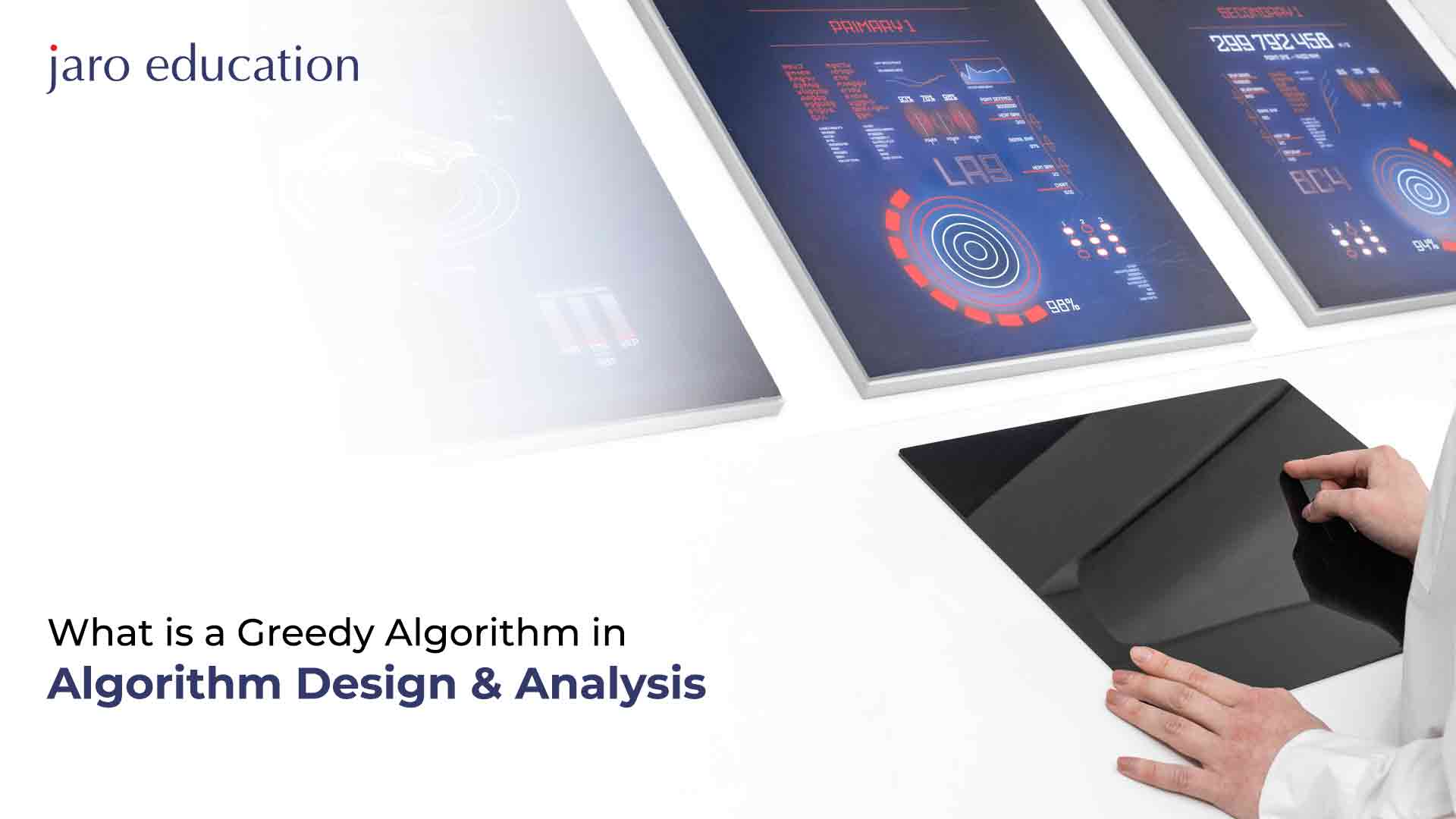The employment of “greedy algorithms” is a typical strategy for resolving optimisation issues in the field of algorithm design and analysis. These algorithms aim to find a global optimum by making locally optimal decisions at each stage.
The greedy algorithm is a straightforward, understandable, and frequently effective approach to resolving particular kinds of issues. It operates by constantly selecting the greatest option available at each phase without considering the choice’s long-term implications. Although this method may not always result in the best option, it is frequently a useful technique to locate a suitable solution quickly.
In this chapter, we will examine the idea of greedy algorithms, their advantages and disadvantages, and a number of real-world applications. We will also review some of the fundamental ideas and methods employed in studying and creating greedy algorithms.
Characteristics of Greedy Algorithms
Making locally optimal choices
A greedy algorithm selects the best option available at that specific moment at each step without taking the decision’s long-term implications into account.
No backtracking
A greedy algorithm’s decisions are final and cannot be changed or undone after they have been made. The algorithm keeps going without going back to its earlier choices.
Iterative process
Greedy algorithms operate in a succession of iterative phases, each building on the one before it.
Efficiency of greedy algorithms
Greedy algorithms frequently have a low number of steps and are consequently computationally quick, they are often effective in terms of temporal complexity. Nevertheless, because greedy algorithms don’t always come up with the best feasible answer, this efficiency could come at the expense of optimality.
Examples of Greedy Algorithms
Coin changing problem:
Given a collection of currency denominations, this problem aims to determine the smallest number of coins required to create a certain amount of change. For this task, a greedy algorithm repeatedly selects the most significant coin denomination that fits inside the remaining quantity of transition until the total is attained.
Fractional knapsack problem
In this issue, we have a set of things with different weights and values, as well as a knapsack with a finite weight capacity. The objective is to select goods that maximise the overall worthwhile staying within the weight limit. For this task, a greedy algorithm chooses items based on their value-to-weight ratio and adds as much of each as is practical until the knapsack is full.
Huffman coding
A data compression method called Huffman coding gives characters variable-length codes dependent on how frequently they appear in the input data. A binary tree with the shortest codes is created via a greedy method for Huffman coding using the most popular characters.
Minimum spanning tree
A minimum spanning tree is a tree that connects all vertices with the least amount of total edge weight given a weighted, connected graph. Until all vertices are included in the tree, a greedy method for this problem adds the minimum-weight edge that periodically connects a vertex in the tree to a vertex outside the tree.
Shortest path algorithm
Finding the shortest route between two vertices in a weighted graph is the aim of the shortest path algorithm. Until the destination vertex is reached, a greedy solution for this problem repeatedly chooses the unvisited vertex that is the furthest from the source vertex from what is known about its neighbours’ distances.
Design and Analysis of Greedy Algorithms
Greedy choice property
This characteristic states that a locally optimum decision can be made at each stage of the algorithm to provide a globally optimal solution.
Optimal substructure property
The optimal solution to a problem can be created from the optimal solutions of its subproblems, according to this property.
Proof of correctness
We must demonstrate that a greedy algorithm meets the greedy choice property and the optimal substructure property in order to establish its correctness.
Time complexity analysis
The number of steps required to discover a solution and the time required for each step must be taken into account when analysing the temporal complexity of a greedy algorithm. We may use this study to determine the algorithm’s effectiveness and scalability for various problem sizes.
When to use and when not to use greedy algorithms
When to employ greedy algorithms
- The issue demonstrates both the optimal substructure and greedy choice properties.
- An internationally optimal or nearly optimal solution to the issue is sought as an optimization problem.
- A series of decisions that can be taken in a locally optimal manner is part of the issue.
- The problem has many possible solutions, and other algorithmic solutions are too time-consuming.
When to avoid employing greedy algorithms
- The greedy choice and optimal substructure properties are not present in the issue.
- The issue entails a series of decisions that call for backtracking.
- Dependencies are involved in the issue, which makes a local solution impossible.
- The problem needs to be solved precisely, and the greedy approach might not provide it.
- Constraints in the issue cannot be satisfied by a locally optimum solution.
Online MCA Programme
You should enroll in an online master of computer application programme if you want to learn more and fully grasp the nuances of computer architecture. This online MCA degree covers cloud computing technology, exams, practicals, and projects. You cannot leave your existing job in order to enrol in this MCA programme at Manipal University Jaipur. A further advantage of one of the top online MCA programmes is the condensed course length. Unlike other full-time programmes, this online MCA course won’t require much of your time. The fact that it expands prospects for large organisations is the most astonishing benefit.
Conclusion
Finally, greedy algorithms are a well-liked method for resolving optimization issues in algorithm design and analysis. In order to obtain a globally optimal or nearly optimal solution, these algorithms operate by making locally optimal decisions at each stage. Greedy algorithms are frequently straightforward, understandable, and effective approaches to tackling specific sorts of problems, even though they may not always ensure the best outcome. Although greedy algorithms have advantages, they can have drawbacks. They might not always be the most effective strategy for dealing with complex issues that ask for a precise answer or have dependencies that cannot be resolved locally.
Ultimately, greedy algorithms are a useful tool for designing and analysing algorithms, and the nature and limitations of the task will determine how effective they are.





